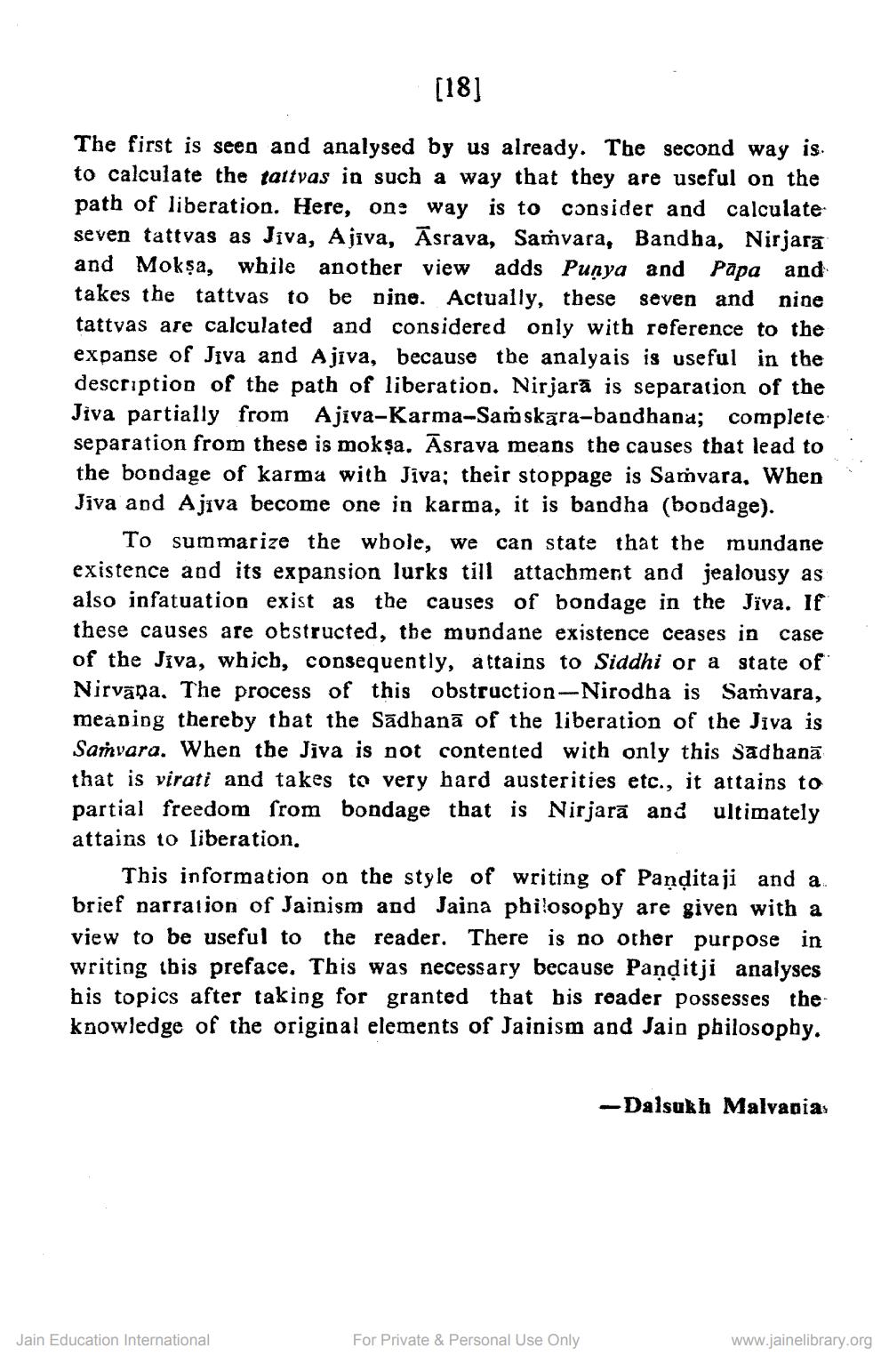________________
[18]
The first is seen and analysed by us already. The second way is. to calculate the tattvas in such a way that they are useful on the path of liberation. Here, one way is to consider and calculate seven tattvas as Jiva, Ajiva, Āsrava, Samvara, Bandha, Nirjara and Mokşa, while another view adds Punya and Papa and takes the tattvas to be pine. Actually, these seven and nine tattvas are calculated and considered only with reference to the expanse of Jiva and Ajiva, because the analyais is useful in the description of the path of liberation. Nirjarā is separation of the Jiva partially from Ajiva-Karma-Saṁskāra-bandhana; complete separation from these is mokşa. Asrava means the causes that lead to the bondage of karma with Jiva; their stoppage is Samvara, When Jiva and Ajiva become one in karma, it is bandha (bondage).
To summarize the wbole, we can state that the mundane existence and its expansion lurks till attachment and jealousy as also infatuation exist as the causes of bondage in the Jiva. If these causes are obstructed, the mundane existence ceases in case of the Jiva, which, consequently, attains to Siddhi or a state of Nirvapa, The process of this obstruction-Nirodha is Samvara, meaning thereby that the Sadhanā of the liberation of the Jiva is Samvara. When the Jiva is not contented with only this sadbanā that is virati and takes to very hard austerities etc., it attains to partial freedom from bondage that is Nirjarā and ultimately attains to liberation.
This information on the style of writing of Panditaji and a brief narration of Jainism and Jaina philosophy are given with a view to be useful to the reader. There is no other purpose in writing ibis preface. This was necessary because Panditji analyses his topics after taking for granted that bis reader possesses the knowledge of the original elements of Jainism and Jain philosophy.
-Dalsukh Malvapia,
Jain Education International
For Private & Personal Use Only
www.jainelibrary.org




